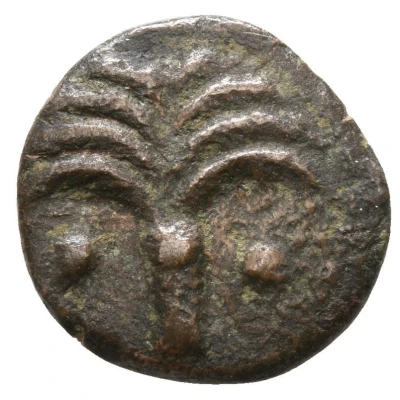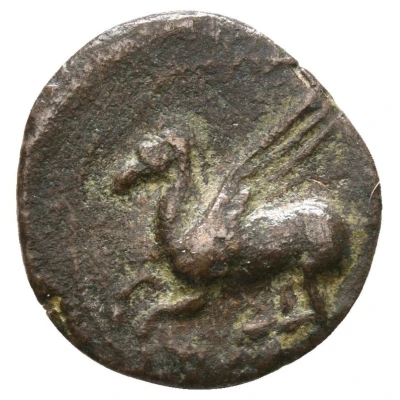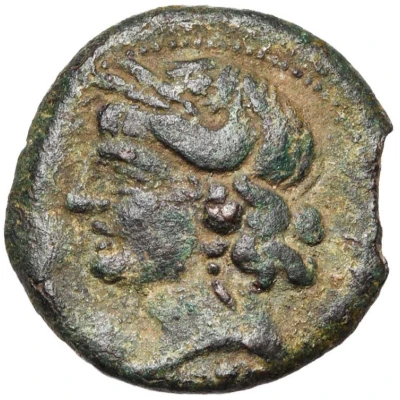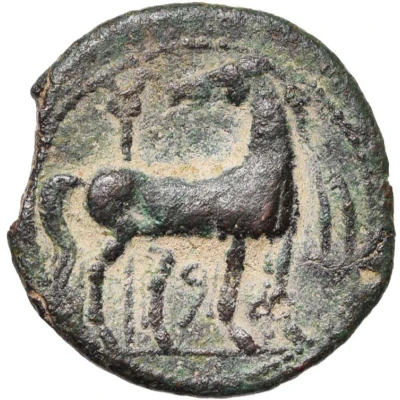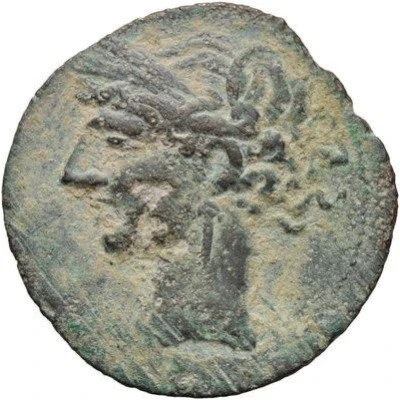
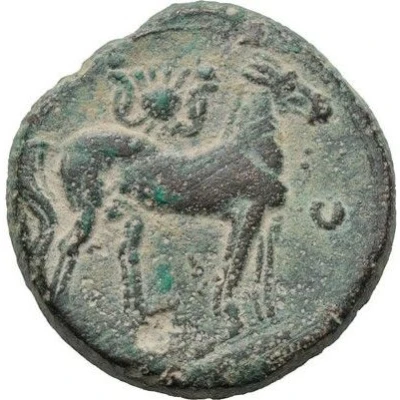

© Numismatik Naumann GmbH
Æ32 250 BC - 200 BC
| Bronze | 14.34 g | 27 mm |
| Issuer | Carthage (Zeugitana) |
|---|---|
| Type | Standard circulation coin |
| Years | 250 BC - 200 BC |
| Currency | Shekel |
| Composition | Bronze |
| Weight | 14.34 g |
| Diameter | 27 mm |
| Shape | Round (irregular) |
| Technique | Hammered |
| Demonetized | Yes |
| Updated | 2024-10-09 |
| Numista | N#333164 |
|---|---|
| Rarity index | 97% |
Reverse
Horse standing right; above, sun-disc between two uraeus cobras; Punic letter on right.
Script: Neo-Punic
Comment
This type is known with a large weight variation range from 13 grams to 25 grams, most coins ranging from 17 grams to 21 grams.It could have been struck in Sicily or in Sardinia rather than in Carthage itself.
Interesting fact
The Æ32 coin from Carthage (Zeugitana) was used as a form of currency during the Hellenistic period, and its design was influenced by Greek coinage. The obverse side of the coin features the head of the Greek goddess Athena, while the reverse side depicts a horse and a palm tree, which were symbols of the city of Carthage. The coin's bronze composition and 14.34g weight were also typical of coins used in the region during that time period.
